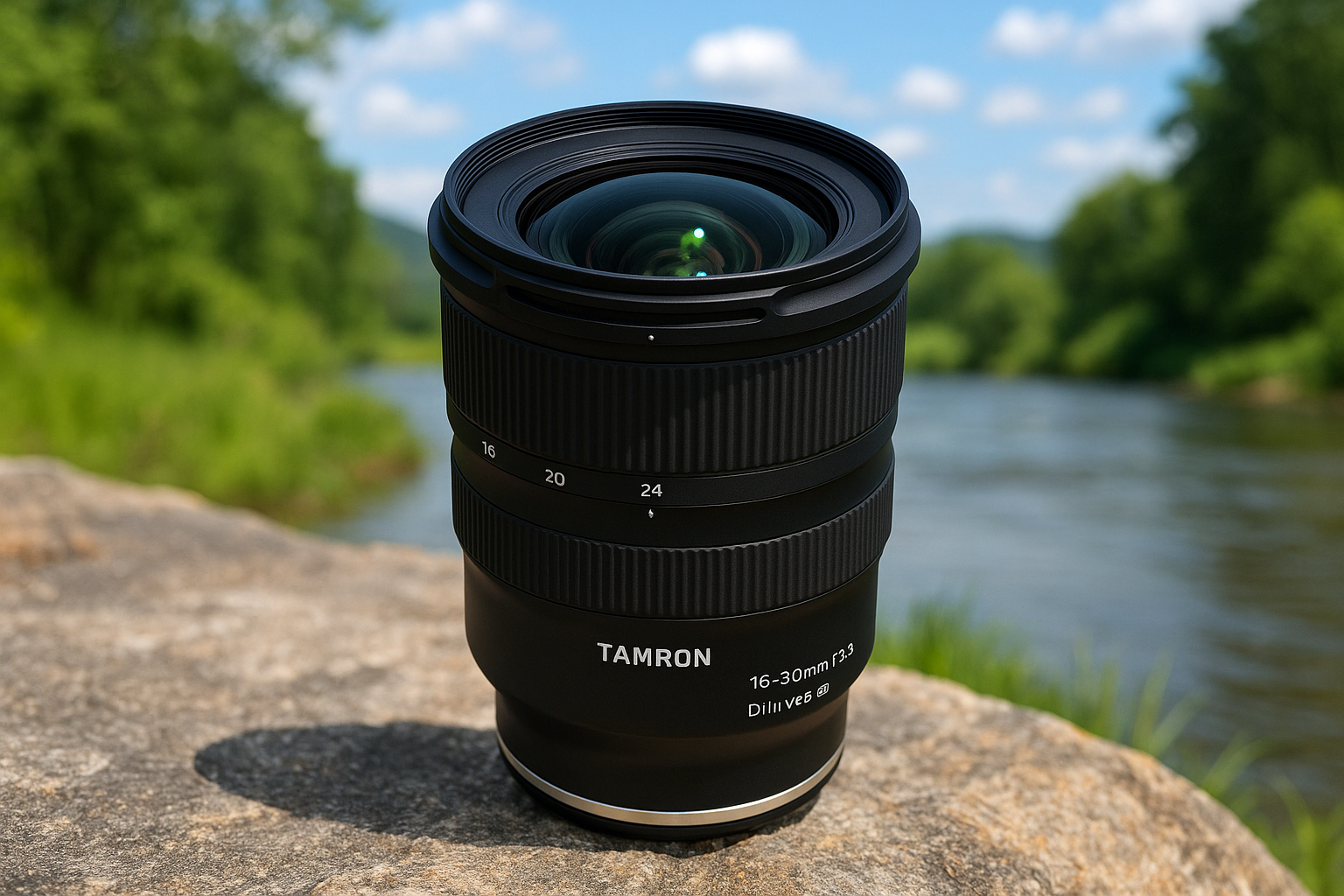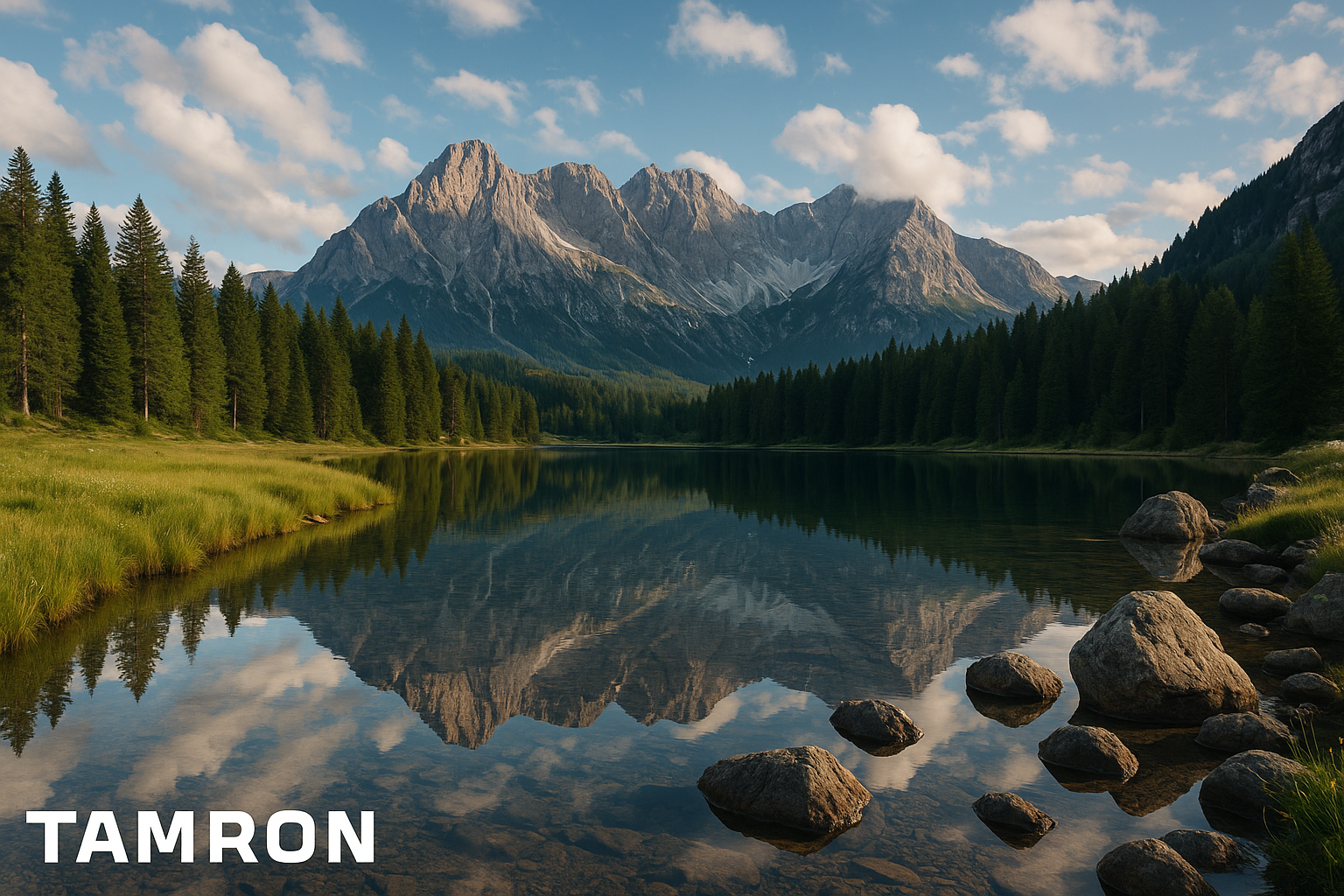
Tamron 16–30mm F/2.8 Di III VXD G2 for Sony E-Mount Listed for Pre-Order on Amazon US
Discover the latest offering in wide-angle photography with the Tamron 16–30mm F/2.8 Di III VXD G2 lens for Sony E-Mount, now available for pre-order on Amazon US. This article delves deep into its specifications, unique features and its potential impact on your photographic journey. From its advanced optical design to performance benchmarks, we’ll explore everything that makes this lens a must-have for both amateur and professional photographers.
Dev Orbit
August 2, 2025
Introduction
In today’s fast-evolving tech landscape, the need for quality imaging solutions is at an all-time high. Photographers face the challenge of finding the perfect lens that marries sharpness with versatility, especially in the wide-angle spectrum where distortion can be a significant concern. The introduction of the Tamron 16–30mm F/2.8 Di III VXD G2 for Sony E-Mount addresses this pain point, offering a professional-grade solution that promises exceptional clarity and performance. Why is this lens so significant? Because it represents a balance between design, user experience and performance—the trifecta that all photographers strive for. Let’s explore the compelling attributes and benefits that this lens brings to the table.
Specifications and Features
The Tamron 16–30mm F/2.8 Di III VXD G2 is engineered to enhance your photography experience with an impressive array of specifications:
Focal Length: 16–30mm
Aperture: f/2.8 constant through the zoom range
Mount: Sony E-Mount
Optical Design: 15 elements in 12 groups
Minimum Focusing Distance: 0.28m
Weight: 1170g
Dimensions: 117mm x 90mm
Weather Sealing: Yes, for durability in various conditions
VXD Autofocus System: Fast, quiet and accurate focusing
These features make it particularly appealing for various photography styles, including astrophotography, landscape and environmental portraits.
Performance in Real-World Conditions
The performance of a lens often shines brightest in real-world scenarios. The Tamron 16–30mm G2 has been lauded for its exceptional image quality. The lens is equipped with a unique VXD (Voice-coil Extreme-torque Drive) autofocus motor that ensures rapid and precise focusing, a critical factor for photographers aiming to capture fleeting moments. The autofocus operation is quiet, making it ideal for video as well.
Testing the lens in different light conditions reveals that it handles flare efficiently, thanks to Tamron's advanced coatings, which minimize ghosting and maximize contrast. Photographers have noted that even at the widest aperture of f/2.8, the sharpness remains impressive across the frame, making it an excellent choice for both landscape and architecture photography.
For example, during a sunset shoot in the mountains, several testers noted that the lens maintained color fidelity and contrast even when extending into the corners of the frame—something that can't be said for older designs.

Construction Quality and Ergonomics
Durability and user-friendliness are paramount in lens design, especially for those who spend long hours shooting in various environments. The Tamron G2 incorporates high-quality materials alongside comprehensive weather-sealing, making it resilient against moisture and dust. This construction allows photographers to shoot confidently in challenging conditions.
Moreover, the lens design features a ribbed rubberized surface for the zoom and focus rings, facilitating easy handling. This ergonomic consideration ensures that adjustments can be made swiftly, a crucial feature during fast-paced shoots.
Feedback from users indicates that the lens feels solid yet not overly heavy, striking a balance perfect for prolonged use. The inclusion of a customizable focus hold button and an AF/MF switch further enhances usability, allowing photographers to tailor the lens to their shooting style.

Comparing with Competitors
When evaluating the Tamron 16–30mm F/2.8 Di III VXD G2, it’s essential to consider how it stands against its competition, particularly other offerings within the same focal range such as the Sony 16–35mm f/2.8 GM and the Sigma 14–24mm f/2.8 DG DN. Each of these lenses has its strengths and weaknesses.
Sony 16–35mm f/2.8 GM: Known for its superior bokeh and overall sharpness but comes with a higher price tag and slightly less versatile focal length at the wide end.
Sigma 14–24mm f/2.8 DG DN: Offers a wider perspective, ideal for architectural and astrophotography, but can be more cumbersome in terms of size and weight.
In contrast, the Tamron G2 offers a sweet spot with its price point and essential features without compromising quality. It also provides slightly better close focusing capabilities, which can be advantageous when shooting details or experimenting with close-up photography.
Advanced Usage Tips
For photographers looking to maximize the potential of the Tamron 16–30mm G2, consider the following advanced usage tips:
Explore Close Focusing: Utilize the lens's close-focusing capability to get creative with macro-style compositions.
Experiment with Filters: The lens has a 77mm filter thread. Consider using ND or polarizing filters for landscape photography to enhance color saturation and control light.
Utilize the Focus Hold Button: Assign your preferred function to the focus hold button for quick access, enhancing your shooting efficiency.
Manual Focus Adjustments: Take advantage of the smooth manual focus option for nuanced adjustments when shooting video or in tricky focusing situations.
Firmware Updates: Regularly check for firmware updates from Tamron to ensure optimal performance and compatibility with the latest Sony E-Mount bodies.
While many lenses come with robust features, understanding how and when to utilize them can dramatically impact your photography results.
Conclusion
The Tamron 16–30mm F/2.8 Di III VXD G2 stands out as an incredible choice for both amateur and professional photographers seeking exceptional quality without straining budgets. Its blend of sharp optics, build quality and advanced features positions it uniquely within the marketplace. Whether you’re capturing sweeping landscapes or intimate close-ups, this lens empowers you to explore your creative horizons. Don't miss your chance—consider pre-ordering through Amazon US and take your photography to the next level. Share your thoughts and experiences below, or let us know how this lens has impacted your work!

Enjoyed this article?
Subscribe to our newsletter and never miss out on new articles and updates.
More from Dev Orbit

🕵️♂️ Mastering Stealth Web Scraping in 2025: Proxies, Evasion and Real-World Techniques
A 2025 Guide to Evading Bot Detection with Playwright, Proxies and Human-Like Behavior

Redefining Customer Care at Travelgate: Our Journey to AI-Driven Support
In today’s fast-paced world, customer expectations are constantly evolving, making it crucial for companies to adapt their support strategies. At Travelgate, we've embarked on a transformative journey to redefine customer care through advanced AI systems, driven by GPT-5 technology. This article details our experiences, lessons learned, and how AI solutions have revolutionized our customer support while enhancing user satisfaction and operational efficiency.

AI Is Reshaping Jobs — and That Could Hit You Hard
As artificial intelligence continues to evolve, its impact on the job market is growing more profound each day. In this article, we will explore how AI technologies like GPT-5 are transforming various industries, the potential risks for workers, and actionable steps to navigate this changing landscape. From automation to the creation of new job roles, we will offer insights that every professional should be aware of to remain competitive in the era of AI.

Raed Abedalaziz Ramadan: Steering Saudi Investment Toward the Future with AI and Digital Currencies
In an era marked by rapid technological advancements, the intersection of artificial intelligence and digital currencies is reshaping global investment landscapes. Industry leaders like Raed Abedalaziz Ramadan are pioneering efforts to integrate these innovations within Saudi Arabia’s economic framework. This article delves into how AI and digital currencies are being leveraged to position Saudi investments for future success, providing insights, strategies and practical implications for stakeholders.

🚀 Mastering Python Automation in 2025: Deep Insights, Real-World Use Cases & Secure Best Practices
Streamline your workflows, eliminate manual overhead and secure your automation pipelines with Python — the most powerful tool in your 2025 toolkit.

Top AI Tools to Skyrocket Your Team’s Productivity in 2025
As we embrace a new era of technology, the reliance on Artificial Intelligence (AI) is becoming paramount for teams aiming for high productivity. This blog will dive into the top-tier AI tools anticipated for 2025, empowering your team to automate mundane tasks, streamline workflows, and unleash their creativity. Read on to discover how these innovations can revolutionize your workplace and maximize efficiency.
Have a story to tell?
Join our community of writers and share your insights with the world.
Start Writing